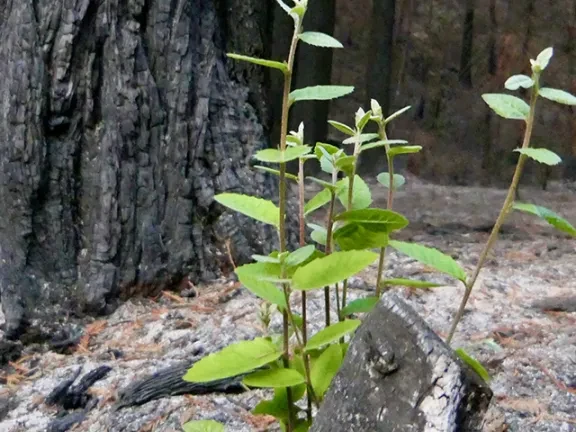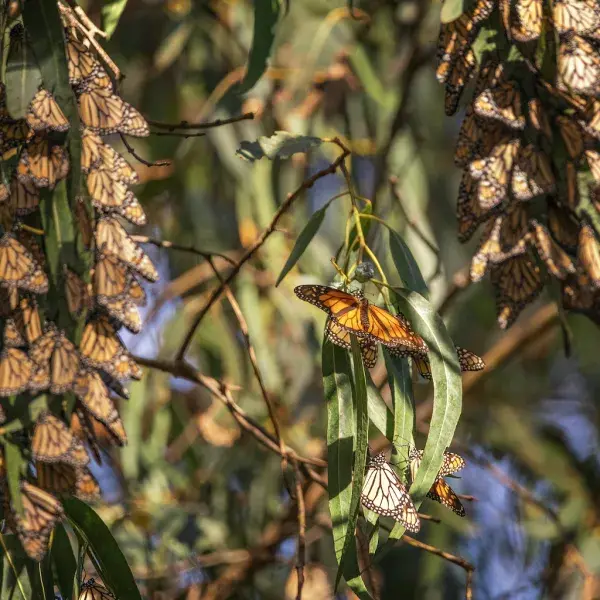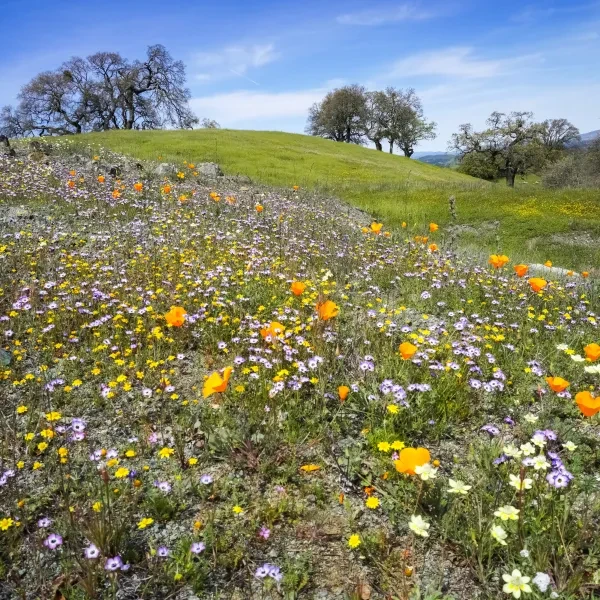We are using the best available science and research to learn deeply about climate threats and solutions, educate Californians and the Legislature, activate people to take action, and ultimately influence policy and legislation that prioritizes the communities most impacted by climate change.
We provided $138,472.00 to nine grantees for wildfire education, fuel reduction, removing invasive plants, planting native plants, and hardening structures.
We provided $49,971.53 to two grantees for western monarch butterfly grove management projects that address climate threats.
Due to severe storms in winter 2022–2023, over 100 parks closed across 14 districts, and parks suffered almost $200 million in damages.
California State Parks performed prescribed burns in 42 park units to increase wildfire resilience in 2022.

“With the terrible fire at Big Basin, a park of special importance to my family and me, I needed to make sure I donated to help rebuild that beautiful park and all the other parks in the state that need special help right now. No more leaving it until ‘someday.’”
– California State Parks Foundation Member

Monarch Butterflies at Lighthouse Field State Beach.
Creating Grove Management Plans to Protect Western Monarch Butterflies
For years, California State Parks Foundation has supported western monarch butterfly conservation in California state parks by funding education, outreach, research, and programming. California State Parks is the single largest land manager for overwintering groves — coastal sites where western monarchs migrate every winter — so they play a key role in preserving these sites. One focus has been working with The Xerces Society on the development of overwintering grove management plans, which provide a detailed and adaptable process to assess habitat health, identify and address threats, and enhance current groves. Priorities outlined in each plan include maintaining or improving windbreaks (since overwintering monarchs require shelter from high winds) while ensuring adequate sunlight reaches clustering monarchs; reducing causes of monarch mortality; and increasing native, fall, winter, and spring blooming nectar resources.
The location and structure of overwintering sites provide a particular microclimate that cannot be replaced if lost. Monarchs are also particularly vulnerable while overwintering. Therefore, having a detailed management plan to preserve and restore these groves is critical for the western monarch butterfly’s population recovery.

Leo Carrillo State Park
Nature-Based Solutions to Climate Threats
Resilient coastlines: Preserving native habitat threatened by sea level rise
With support from California State Parks Foundation, California State Parks restored three acres of coastal bluff scrub at Leo Carrillo State Beach. Most scrub plants were killed in the 2018 Woolsey Fire, and then non-native species invaded the area. Sea level rise is speeding up coastal cliff erosion, resulting in even greater habitat loss. By removing three acres of invasive plants, California State Parks made room for native scrub plants to regrow and create more of this valuable coastal habitat. The funded work also made the beach more climate-resilient because native scrub plants decrease the chance of another wildfire compared to non-native plants.

Henry Coe State Park
Wildfire-Resilient Landscapes: Partnering with California Native Plant Society
California State Parks Foundation invested in field surveys at six California state parks impacted by the CZU Wildfire Complex, the SCU Wildfire Complex, the Dolan Fire, or the Colorado Canyon Fire. The California Native Plant Society found that some habitats experienced more severe wildfires than others but that resilient native plants were able to recover. For example, chaparral and oak woodlands in Henry Coe State Park had the most severe fires, but these native plants resprouted afterward. In fact, the only significant impact was that non-native plants also grew at several sites, which could increase the risk of another wildfire because non-native plants are more prone to fire than native plants. Knowing this information, park managers can focus on high-risk areas and remove potentially dangerous non-native plants. These management plans will increase state parks’ climate resilience as wildfires become more common and more severe.